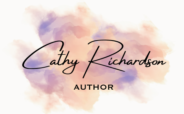I am an Indigenous woman from small town Vancouver Island. As a Métis child in a white settler state, I think I was programmed genetically with the instinct to flee. My life was accompanied with the knowing that I had been born in the wrong place, apart from something significant, a small town where life often felt a bit crass. For me, this consisted of having one foot in a relatively safe middle-class family and another in a town premised on alcohol consumption, toxic masculinity, violence, and gender-inequality. Neither of my feet were planted in progressive, alternative, nor Indigenous culture. By the time I graduated from high school I had experienced all sorts of depravity (including witnessing a gang rape at a party, losing a friend to suicide and loved ones to chemical drugs), which separated me on the path towards understanding myself. I remained intact through a minimum amount of structure composed of a job at my dad’s drug store, where my school mates, from time to time, were caught breaking in to steal barbiturates. I was held together by Sunday dinners at my English grandparents’ home and hearing about the possibilities of international travel from my aunt and uncle, P and G. Otherwise, I was living my life as a witness to small town existence, dabbling in everyday life while planning my escape.
In 1982, after years of intense labour in a pizza restaurant, I saved enough money for my departure. A friend and I bought two tickets that would eventually take us right around the world. We started in Victoria and flew to Tokyo, beginning travel in Asia that would last several months. We visited Taiwan, mainland China, Hong Kong and one of the most fabulous places, Thailand. Time spent in India and Nepal involved hiking in the Himalayas, exploring Calcutta and New Delhi, becoming completely overwhelmed and breath-taken by the intensity and the beauty of these lands.
After some time in Europe, and a parting of the ways with my travelling companion, I ended up in Sweden. I will add here the footnote that I am hopping over much of the intrepid and growth-promoting relational dynamics. I no longer chose to view countries as mere “backdrop” to my romantic life.
My mother’s father is a Swede. Alvar Oak left Småland for Canada during the 30s, where he planned to “live with the Indians”, which he could have done in Sápmi (Sami lands in northern Sweden). I once co-authored a piece called “Elin Maria Ekström and the Stories that Connect Us” telling of my Swedish lineage and the splitting of the family tree into Turtle Island. https://www.researchgate.net/publication/333344326_Ellen-Maria_Ekstrom_and_the_Stories_That_Connect_Us
Since I had recently met a delightful young Swede on the road, I decided it was a good time to go to that country to pursue him and meet my family at the same time. I arrived when I was 21 (or so) and stayed for nearly four years intermittently. I ended up living both in Nyköping and Stockholm. I explored the neighbouring places of which the delights, I was sure, were hidden from me through western propaganda and the arms-traders, since we were on the tail end of the “Cold War” (I took three trips to the Soviet Union as well as visiting Helsinki and places such as Bulgaria, Istanbul, Czechoslovakia, East Germany, etc.). Really, I wanted to get as far away from the United States, western racism and consumerist culture as possible.
I arrived in Sweden at a good time… on the tail end of the amazing social democratic experiment. I went to immigrant school, learned Swedish, made friends, mostly immigrants who told me of Sweden’s dark and ugly under-belly to complement the fresh red paint of the dalarna houses and the wonderful försäkringskasse (the number you called to receive your wages when you were sick or couldn’t go to work). I took several jobs that helped me acclimatize into the society.
Working with young children, as a barnflicka and then på dagis (in a daycare centre) offered me a full view into children’s culture. I took opportunities to cook, bake, learn the children’s songs and celebrate the nature-inspired seasonal holidays. I read about Pippi Longstocking, Emil, the Barn of Lille Kulla, and sad Brothers Lionhart and enjoyed progressive music such as Björn Ulvaneus.
A few things I remember well were, among others, a May 1 tv puppet show celebrating International Workers Day and the fact that the conservatives are excluded from these festivities (Det är första Maj och de får inte va med, sung to the tune of “In the Summertime” by Mungo Jerry). The fact of women’s equality to men was not up for debate, nor was beach nudity. Stockholm’s busiest day of the year was income Tax Day, where tax employees stood in the middle of the road to collect “drive by” tax returns… much like the squeegee window cleaners in Canadian cities. Another highlight was meeting the real Santa Claus, or Jul Tomte, one Christmas eve in Falsterbo.
My biggest “take-aways”? Despite the tensions, there are social possibilities. Despite Stig Larssen (The Man Who Hated Women/Millenium Trilogy) and Hanna Olsson’s (The murder of Catrine da Costa) more recent revealing of the bureaucratic corruption and nefarious men-of-power, it is possible to have a society where the collective good still matters. Supporting family life is possible, integrating newcomers into the Swedish fabric does not destroy Swedish traditions. And, if people don’t want to pay high taxes, they can move away – that’s okay.
